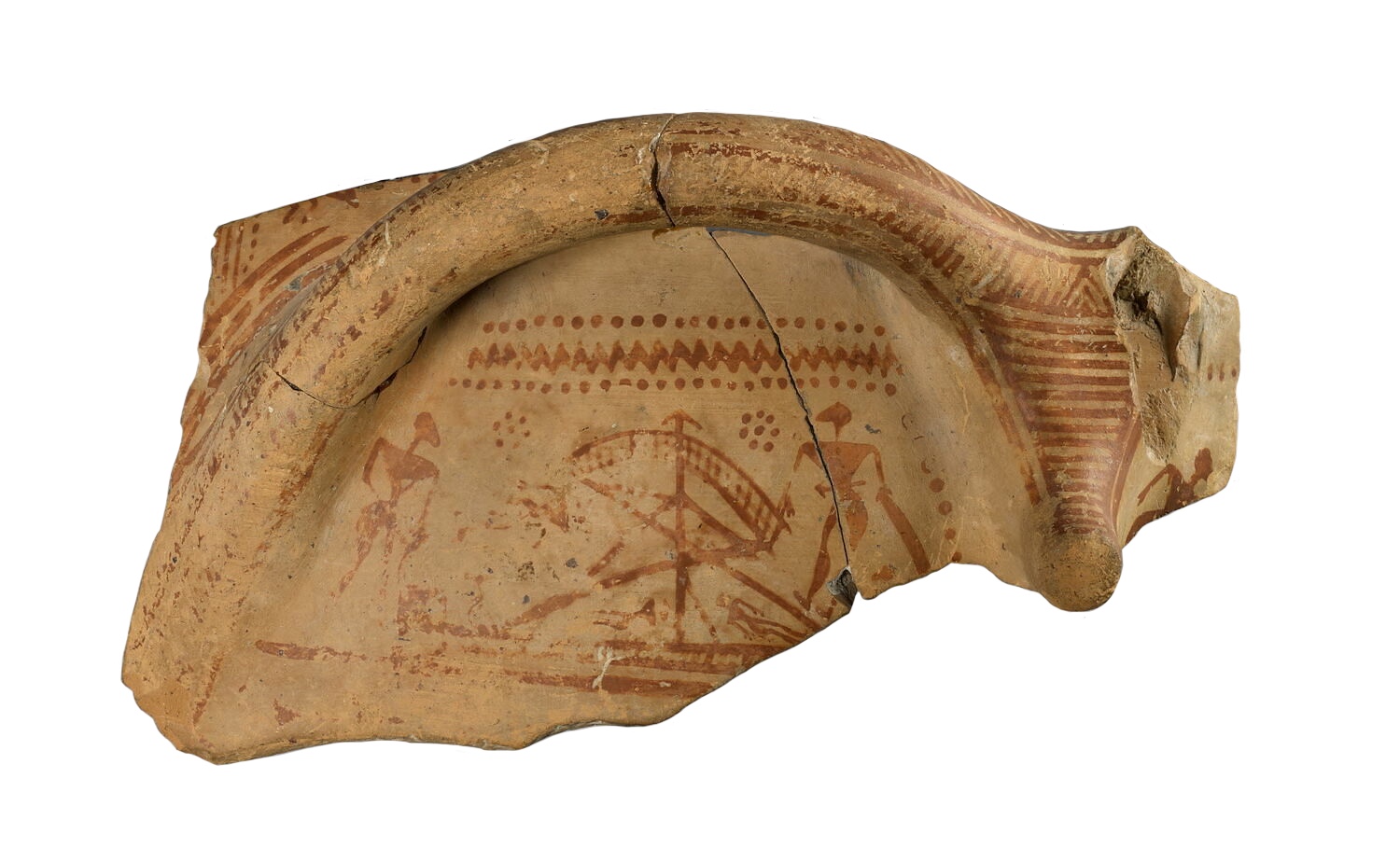A150a: Ship to the left, with a low and completely straight hull, a vertical stempost with a very long bow projection and an incurving horn. The hull has two reserved lines. The lower one is empty, while the upper one has seventeen preserved oblique strokes. The stern is missing. There is a mast amidships, with an arrow-like masthead and a crescent-shaped sail with a checkerboard pattern made up of numerous verticals and a single horizontal line. There are two braces which cross each other and are attached to the deck. At mid-mast, two diagonal lines extend downwards to the deck which must be halyards. There are five figures on the ship: the two active ones are oversized, while three corpses are painted on a much smaller scale. The helmsman is depicted standing, holding the steering oar with his right hand. Another figure stands on the bow projection facing right, with his left hand holding on to the stempost device. Two of the corpses are shown floating below the halyards, with a third below the lower left corner of the sail.
A150b: The same pattern of crossed lines as on the previous sherd representing the middle of the mast with rigging. Considering how unusual such rendering is, it is nearly certain that this sherd belong to a vase that was decorated by the same hand.





